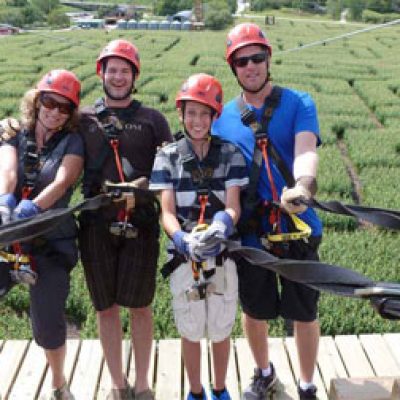

Cellphone Photography Made Simple – Capture Your Moments in Nature!
By Dennis Fast of Dennis Fast Photography in Manitoba Outdoors Magazine
It’s no secret that over the last few years, a LOT of people have been trying new things like outdoor adventures, activities, and hobbies. Naturally, with people rediscovering the outdoors, there has been quite a boost in photography showcasing peoples’ great adventures, discoveries and of nature itself. While it has certainly gotten easier for people to experiment with photography using cellphones, it doesn’t quite mean that taking good-quality photos has gotten easier.
So, if you’ve been thinking about trying your hand at this fun activity or if your cellphone photos never seem to capture what you envisioned, here’s some helpful tips to get you one step closer to stunning pictures! Today’s blog features one of Manitoba Outdoors Magazine’s articles titled Cellphone Photography Made Simple by Dennis Fast of Dennis Fast Photography.
The Manitoba Outdoors Magazine is full of fantastic tips, tricks and Manitoba destinations that new or not-so-new outdoor enthusiasts will love and appreciate. Created by John Falk of John Peter Events and many hardcore nature and adventure seekers, Manitoba Outdoor Magazine is made for the outdoorsmen, the nature lover, the thrill-seeker, and, really, anyone who loves the great outdoors!
Tips from Dennis Fast
 Yes, you heard that right – a supposed professional wildlife photographer is giving advice on how to use your cellphone to create the best photos you are capable of. Any photos with this article were done in Manitoba on my Huawei P30 Pro.
Yes, you heard that right – a supposed professional wildlife photographer is giving advice on how to use your cellphone to create the best photos you are capable of. Any photos with this article were done in Manitoba on my Huawei P30 Pro.
Cellphones can produce amazing photos these days if you are careful and deliberate about your technique. I am using mine constantly now to do macro shots, panoramas, video, and some landscapes. As my friend once said, “The best camera is the one you have with you,” – and everyone seems to be carrying a cellphone these days.
I constantly remind myself, however, that what is good for a cellphone, computer, or the internet is not necessarily going to be good for a print; but here are some tips for making all your photos better.
 Stop shooting everything in vertical mode! I know it seems easier simply to hold up the camera and start recording with one hand. When you do that, however, two things happen. First of all, you have more sky and foreground in your image than most subjects need. Often the subject is lost in the middle somewhere.
Stop shooting everything in vertical mode! I know it seems easier simply to hold up the camera and start recording with one hand. When you do that, however, two things happen. First of all, you have more sky and foreground in your image than most subjects need. Often the subject is lost in the middle somewhere.
Secondly, if you are focused on any moving subject, be it wildlife or people, you will find your subject disappearing rapidly from view going right or left out of your frame. This leads to all the jerkiness of motion and frantic searching that typifies so many cellphone videos that I see.
Now try the scene in horizontal mode and see what happens. Now you’re forced to hold the cellphone (camera) with both hands. Just like that, the image stabilizes for you, and you are able to pan left or right smoothly as you follow your subject. No more crazy movements that lead you and your audience to a new level of dizziness!
 Shooting wildlife with a cellphone camera has some special issues of its own. Everyone wants to fill the frame with their subject. This can be a two-fold problem. Unless wildlife is accustomed to human preference, you may push it simply to run away. To avoid that, you now zoom in with your camera’s zoom capability, and suddenly the quality drops dramatically. What you are really doing is simply taking an existing photo and “cropping” the captured image to make it feel like you have the same quality of image as if you didn’t zoom in.
Shooting wildlife with a cellphone camera has some special issues of its own. Everyone wants to fill the frame with their subject. This can be a two-fold problem. Unless wildlife is accustomed to human preference, you may push it simply to run away. To avoid that, you now zoom in with your camera’s zoom capability, and suddenly the quality drops dramatically. What you are really doing is simply taking an existing photo and “cropping” the captured image to make it feel like you have the same quality of image as if you didn’t zoom in.
Nothing could be further from the truth. Your image file will be very pixelated and only good enough to show on a cellphone.
You should also keep in mind that not every wildlife shot actually needs to be a full-face shot. The environment or habitat which a bird or animal inhabits is a vital part of its story. Don’t hesitate to leave a little room and work on making a creative composition out of the setting.
About Dennis Fast
Dennis Fast is an internationally recognized wildlife photographer. His photographs have appeared in numerous calendars, magazines and books. Wapusk: White Bear of the North featured his early work with polar bears and became a best seller in Canada with over 7000 copies sold. Since then, Dennis’ photos have been featured in Journey to Churchill at the Winnipeg Assiniboine Park Zoo, presented at various conferences across Canada, and has even published two books, Princess (a children’s story about polar bears) and Touch the Arctic (a coffee table book featuring his outstanding images); not to mention he has brought and share magnificent photos showcasing nature’s undeniable beauty for thousands to enjoy!
“Photography has taught me to seek the delicate moments in nature where life is on the edge and where change is a heartbeat away. My hope is to touch people’s minds and hearts; to help them reconnect with the earth; and to teach respect and gratitude for all of nature. I hope my photos do that for you. Beauty is everywhere if you look, but it begins first of all in the heart.”
Looking for More Information on Photography? Check out our Blogs!
Discover your Eastman Adventure: Photography 101
Strike a Pose at These Stunning Eastman Locations
Fabulous Photo Destinations for Your Holiday Break
Discover your Eastman Adventure: Snap some Photos at these Eastman Places


